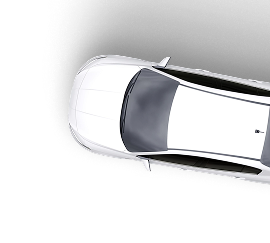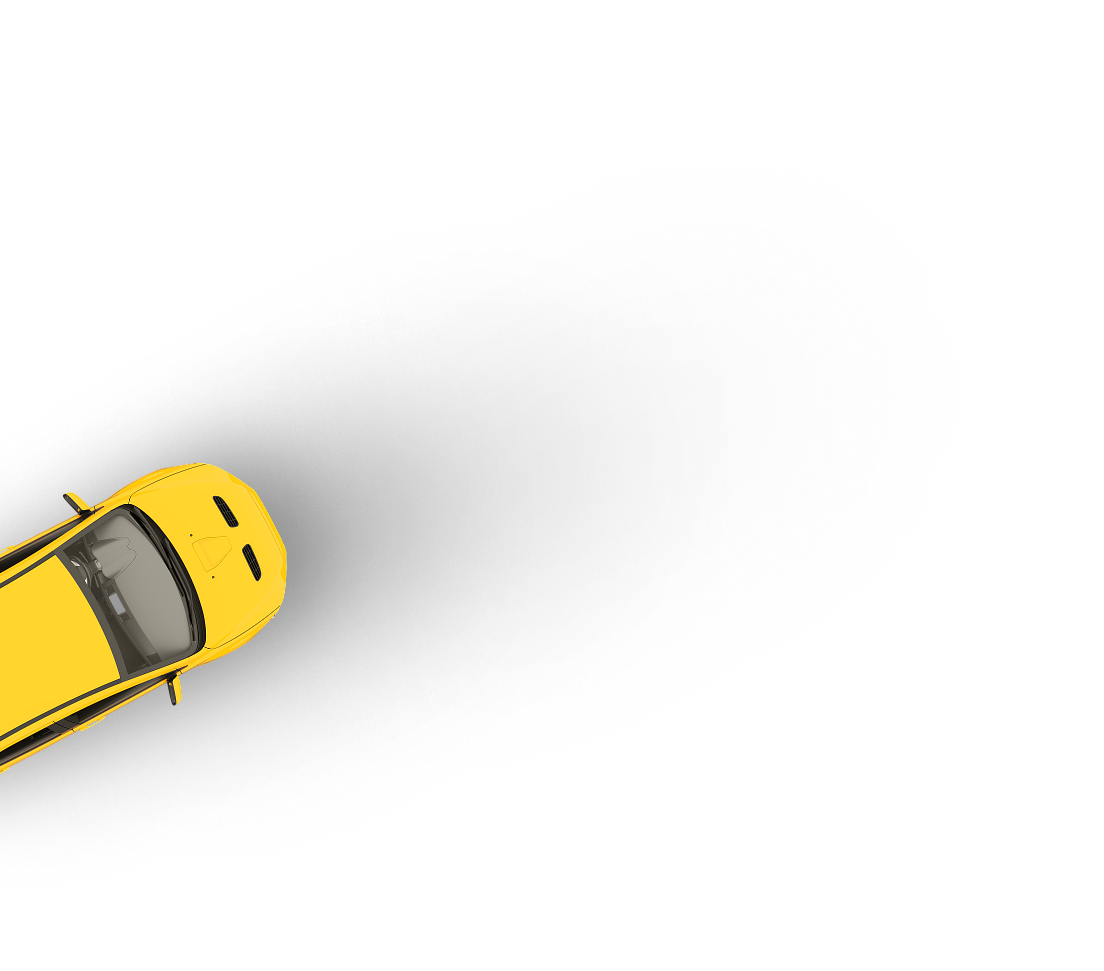Trade to trade car marketplace


Trade-only marketplace
Flexible selling options
Maximise your profits
Timing your car purchase can save you some money, but the “best time” isn’t one-size-fits-all. This guide breaks down when UK buyers get the most leverage, what to avoid and how to play the market smart in 2025, whether you’re buying new, used, diesel or electric
Last updated: 4th August, 2025

Listen to this story
Timing your car purchase right can save you a bit of money and give you more negotiating power. The good news is that year after year, it’s quite predictable.
Whether you're buying new or used, looking for financing deals or going after the best selection, the car market moves in patterns. Dealers run promotions, manufacturers roll out incentives and consumer demand shifts throughout the year.
In this guide, we’ll break down the best times to buy a car in the UK in 2025 and what to look out for if you want to get the best possible deal.
To kick things off, here’s a monthly breakdown of the best and worst times to buy new a car in the UK, based off information we’ve compiled from six different sources:
| Aspect | Best months (new cars) | Worst months (new cars) |
|---|---|---|
| Pricing (deals) | February and August: Low demand before plate changes June and December: End-of-quarter or year-end pushes. | March and September: New plate releases drive high demand (dealers hold prices). Early Spring through April: Less generous, coming off a sales peak. |
| Vehicle selection | March and September: New registration months, dealers stock up, new models launch. October: Still strong selection, combining leftover old-plate stock and incoming new-year models. | Late December: Dealers carry limited stock over the holidays. January: Selection limited to on-hand inventory as new stock arrives closer to March. |
| Financing and offers | January and February: New Year promotions (0% APR, deposit contributions) plus low sales demand. July and August: Summer sales campaigns and pre-plate incentives (0% or bonuses to clear stock). November and December: Year-end incentives (e.g. Black Friday deals, holiday sales with low financing). | April: After Q1, fewer nationwide promos (fewer finance deals). Early September: Less generous right at plate launch since demand is naturally high. |
And here are the best and worst times to buy a used car in the UK in 2025:
| Aspect | Best months (used cars) | Worst months (used cars) |
|---|---|---|
| Pricing (deals) | June, July, August: Summer lull, dealers cut prices to move stock. November and December: Aggressive discounts on used inventory. February: Dealers clear older stock pre-March plate change. | April and May: Nicer weather, new stock excitement, prices firm up after winter lows. Early September: Late-summer demand keeps prices from bottoming out until the new stock arrives. |
| Vehicle selection | April and May: Post-March influx of part-exchange cars means forecourts are full. October: Post-September plate-change, huge variety. June: A secondary peak in nearly-new stock as ex-demo and pre-registered cars from March hit the market. | January and February: Used supply at annual low. August: Somewhat thinner used inventories (after spring sales and before Sept trades). |
| Financing and offers | February and August: Approved used events from franchise dealers (low APR or deposit contributions). Late November/December: Year-end used car clearance sales with incentives (e.g. free warranties, price guarantees). | Spring (Mar-Apr): Fewer promotional APR deals during high-supply months. Summer (Jun-Jul): Formal finance deals are less of a focus in these months, dealers simply cut prices. |
Dealerships are quiet. People are still recovering from Christmas spending. That makes January and February two of the most negotiable months of the year.
Sales targets reset and dealers need momentum, so they’ll often stretch to close a deal (even if stock is a bit thinner). You’ll also see carryover New Year’s promotions and attractive finance packages, especially on outgoing previous-year models.
The downside? If you're picky about spec or colour, you might not find exactly what you want sitting on the lot.
After February, everything changes. The “25” registration plate dropped on 1 March 2025. Dealers are busy delivering pre-orders and riding the wave of buyers wanting the newest plate on the newest cars. That means early March = high demand and low discounts.
During mid-to-late March, however, sales managers trying to hit Q1 bonuses become far more flexible. So there’s a bit of wiggle room at the end of the month if you’re smart and strategic.
As for April, May and June, the residual impact of March’s model releases in the new market and influx of now-retail-ready part-exchange vehicles in the used market means you’ll get a fantastic selection. But dealers will be more firm on price, and financing options won’t be as favourable.
Ahead of September’s number plate release, dealers start clearing out current stock to make room for new arrivals. That’s good news for buyers who don’t care about having the latest plate.
That — combined with the fact summer months are slower — means you’ll often find stronger incentives on cars registered earlier in the year from both new and used dealers. Summer promos are also common. And dealers may offer extra perks like free servicing or finance deals to move metal before the new plates land.
Keep in mind, though, that after spring sales and before September trades, the selection will be a bit thinner.
On 1 September 2025, the new “75” plate will drop, as will new vehicle models. Like March, there’ll be a significant increase in demand from buyers chasing that new reg, meaning fewer dealers will be negotiable on price.
In the new car market, high demand means dealers hold firm on prices. There’s less pressure to negotiate on new models, especially in the first few weeks of the plate release.
Used car prices also stay elevated through September because late-summer demand with limited supply keeps them from bottoming out. And by October, trade-ins are prepped and listed, so there are fewer deals to be had.
September is the end of the quarter, though, meaning if you time your purchase at the end of the month, you might fetch a good deal from a seller who’s desperate to meet their Q3 quota.


As the year winds down, so do car sales, which is precisely why it’s a great time to buy.
Dealers get aggressive with discounts on used inventory, trying to shift older stock before the new year. You’ll also see end-of-year incentives on new cars, including low-rate finance, cashback offers and seasonal promotions around Black Friday and Christmas.
December is especially strong for buyers. It’s both the end of Q4 and the end of the financial year for many dealers, so there’s extra pressure to hit targets. As a buyer, that means better deals, more flexible pricing and added extras.
Weekends are prime time for car shopping, which makes them tougher for negotiating. Dealerships are busier, staff are juggling multiple customers and sellers know someone else might buy if you don’t.
On a weekday, it’s a different story. Foot traffic is a lot lighter, which means staff have more time to work with you and are more likely to push a deal through just to move a unit. After all, if they don’t they might not make a sale at all.
If you want the best shot at getting a solid price or having a few extras thrown in, book your visit midweek.
The time you walk into a dealership can influence the deal you get (though not as significantly).
Early in the day, staff are fresh, focused, and more likely to follow the script. But they’re human; by the end of the day, they probably just want to wrap things up and head home. That’s where things can work in your favour if you’re ready to move fast.
But this strategy only works if you’ve done your homework. Know the car, know its value and come prepared to negotiate without wasting time. If you’re confident and decisive, you can catch a tired seller at the right moment.
Yes, end-of-month, end-of-quarter, and end-of-year targets are real. Yes, March and September plate changes affect pricing. But your experience will still depend on dozens of unpredictable variables.
Maybe there’s a local stock surplus. Maybe one particular dealership just had a dry week. Or maybe the salesperson had an argument with their partner on lunch break and just wants to close a deal fast.
Even Reddit forums reflect this reality. According to one Reddit user in a r/CarTalkUK forum:
“If it’s from a dealer, end of the quarter is good, i.e. March, June, September or December.”
But when another answers the same question:
“There isn't tbh. You may get lucky with a stonking deal at the end of the financial year, if the dealer hasn't met targets, and your sale will reach them, and the sun, stars and moon align.”
While there is some forum consensus around end-of-year and end-of-quarter deals, the truth is relying on “best time of year” alone is pretty shaky. There’s always a trade‑off between timing and delivery, pricing vs resale, and demand shifts. And realistically, every dealer needs to have a markup on every sale, or else they’re not profitable.
Award-winning automotive entrepreneur, tech innovator, and founder of Car.co.uk, NewReg.co.uk & Recycling Lives.
In our experience, the best buyers aren’t the ones who wait around for the ‘perfect’ month. They’re the ones who know their budget, track the market and strike when the right deal appears. Trends matter, but confidence and timing matter more.
Dealers don’t always advertise their incentives, but that doesn’t mean they’re not on the table.
If a car is heavily featured in online ads, showroom displays or email promotions, there�’s a good chance it’s part of a push to move stock. Look for models with added extras bundled in, unusually low finance rates or “£0 deposit” offers. These are classic signs there’s a manufacturer-backed incentive in play.
You can also spot pressure points by asking the right questions. If a salesperson seems unusually flexible on price, quick to offer extras, or eager to close, there’s a good chance they’re working toward a target or bonus.
Pay attention to:
If it feels like they really want to sell you that car, they probably do. And you’ve got more room to negotiate.
New car sales follow a more structured cycle. Dealers work toward monthly, quarterly, and annual targets, and manufacturer incentives are usually tied to those dates. That’s why timing your purchase around March, June, September or December can unlock better deals on new cars.
Used cars are less predictable, so timing matters less. Stock depends on trade-ins, auction volumes and local demand cause prices to fluctuate. So they’re more based on supply and buyer interest than on fixed sales cycles.
That said, timing still matters to a degree. After a plate change (March or September), more part-exchanges hit the market. By April and October, many of these used cars are cleaned, prepped, and priced to sell, which can lead to better selection and more competitive pricing.
Car auctions like Trader.co.uk, BCA or Manheim still offer below-retail prices, but most (including these three) are exclusively for trade buyers. If you’re confident with vehicle inspections, understand how fees work and can move quickly, you’ll be able to snag a great deal here and there.
For the average buyer, auctions come with risk. Cars are sold as seen, there’s usually no warranty and you normally can’t test drive. You’re also competing with seasoned traders who know exactly what to look for.
That said, some public auctions and online platforms (like Wilsons Auctions and Scotland’s Central Car Auctions) are becoming more transparent and accessible. If you do your research, set a strict budget and stick to it, it’s still possible to win.
Timing gives you an edge, but it’s what you do with it that gets results.
There are times when the odds are generally more stacked against you than others. Dealers frame these times as ideal to buy with phrases like “beat the rush” or “get in before prices rise.” But those pushes are more about their timing than yours.
March and September are two of the busiest months in the UK car market due to number plate changes. Demand spikes as buyers rush to get the latest registration, and dealers know they don’t need to work as hard to close a sale. Prices are firm, incentives are limited and negotiation is harder, but you might fetch a better deal on an older model sellers want to move off the lot.
Weekends are also high-pressure times. You’re competing with more buyers, and sales staff are less likely to offer their best deal when they’ve got another customer lined up behind you.
Improving weather (typically in spring and early summer) brings more buyers out to the forecourts. They’re especially looking for convertibles, SUVs and family cars. Dealers may push urgency to take advantage of it. Tax refunds create an additional surge in demand.
Black Friday is a time you’ll frequently see manufacturer-backed incentives, 0% finance deals, deposit contributions and bundled extras like servicing, warranties and accessories. It also nearly lines up with the end of Q4, when dealerships want to hit year-end targets. That gives you extra leverage if you’re ready to buy.
If you’ve done your research, Black Friday is a smart time to buy. Just keep in mind that there are also Christmas and New Year deals which might be better and give you more time to plan.
Not any more than any other type of car.
EVs sometimes have steeper discounts before the end of the quarter or year to meet EV sales mandates, but there’s no “cheapest month” for either diesels or EVs specifically. SMMT data shows Chinese EV makers offered steep discounts in May to expand across Europe, but this is not an established norm.
As for diesel buyers, they’re are mostly looking at the used market now. Nearly half of mainstream brands stopped producing diesel models entirely in 2024. If you're buying one, focus less on timing and more on specs:
For electric cars, pricing changes tend to be driven by grants, new model launches and stock clearances, not by month. For example, the Electric Car Grant (ECG) offers up to £3,750 off eligible EVs under £37,000, but it applies whenever you buy, not just during a sale window.
Other than that, diesel and electric vehicles follow the same patterns as the rest of the market. Manufacturer incentives, dealer promotions and finance offers usually apply across the board, regardless of fuel type.
According to data from NimbleFins, UK-wide averages for new cars in 2025:
No evidence suggests a consistent pricing gap between Scotland and Northern England at the new car level. Manufacturer pricing and dealership discounts typically apply nationwide, with local deals sometimes impacting minor differences but not systematically favoring one region.
According to Reddit users and UK regional data, used car prices in Scotland and Northern England are nearly the same, with differences usually under 5%.
Some historic surveys (like cap hpi’s 2016 data) showed average used‑car prices:
But the bottom line is that for 2025, Scotland and Northern England prices are effectively equivalent.
Dealer discounts can apply to both, but finance buyers tend to get better offers.
That’s because dealers and manufacturers make money on finance packages. In a lot of cases, they’ll offer deposit contributions, lower interest rates or exclusive discounts only if you take out finance through them.
Cash buyers have more flexibility, but less leverage. While you might think paying upfront gives you the upper hand, some dealers are less motivated to cut the price if they’re not earning from the finance deal too.
Still, it’s worth negotiating both ways. Ask for the finance terms, compare the total cost and then see what they'd offer for a cash deal. You can also take the finance, get the incentive and possibly settle the loan early. Just make sure you understand the terms.
As experienced traders ourselves, here’s the truth: timing helps, but it’s not everything.
Yes, there are predictable windows: March and September for plate changes, December for year-end deals and quiet months like January where you might have more leverage.
But at the end of the day, no dealer’s going to drop a price by thousands just because it’s a certain week. You need to decide what matters most to you.
Use the trends, but don’t let them paralyse you. The real move is to know your budget, do your homework and act fast when the right car shows up.
Lorem Ipsum is simply dummy text of the printing and typesetting industry. Lorem Ipsum has been the industry's standard dummy text ever since the 1500s, when an unknown printer took a galley of type and scrambled it to make a type specimen book.
Lorem Ipsum is simply dummy text of the printing and typesetting industry. Lorem Ipsum has been the industry's standard dummy text ever since the 1500s, when an unknown printer took a galley of type and scrambled it to make a type specimen book.
Lorem Ipsum is simply dummy text of the printing and typesetting industry. Lorem Ipsum has been the industry's standard dummy text ever since the 1500s, when an unknown printer took a galley of type and scrambled it to make a type specimen book.
Lorem Ipsum is simply dummy text of the printing and typesetting industry. Lorem Ipsum has been the industry's standard dummy text ever since the 1500s, when an unknown printer took a galley of type and scrambled it to make a type specimen book.
Lorem Ipsum is simply dummy text of the printing and typesetting industry. Lorem Ipsum has been the industry's standard dummy text ever since the 1500s, when an unknown printer took a galley of type and scrambled it to make a type specimen book.

